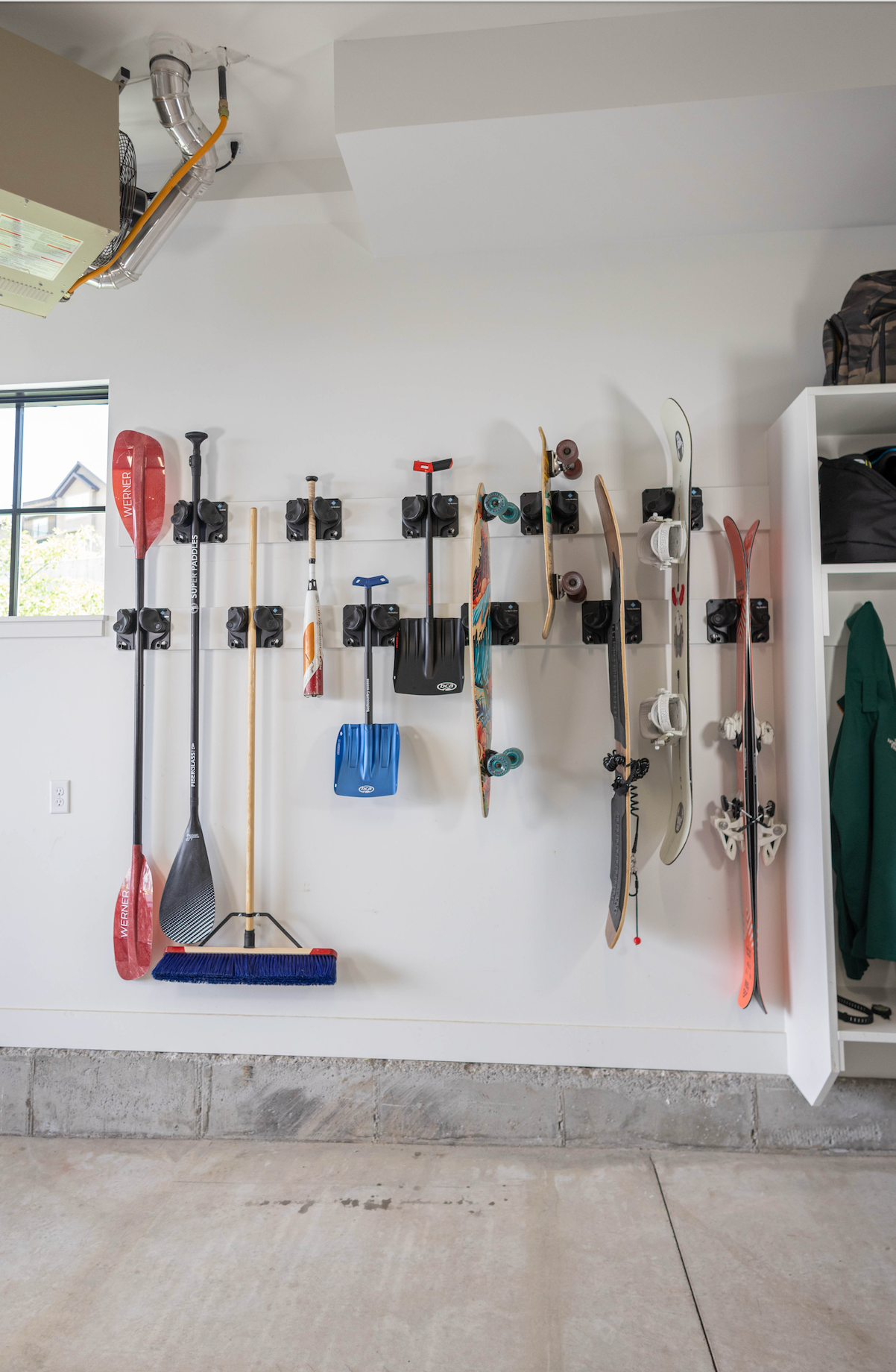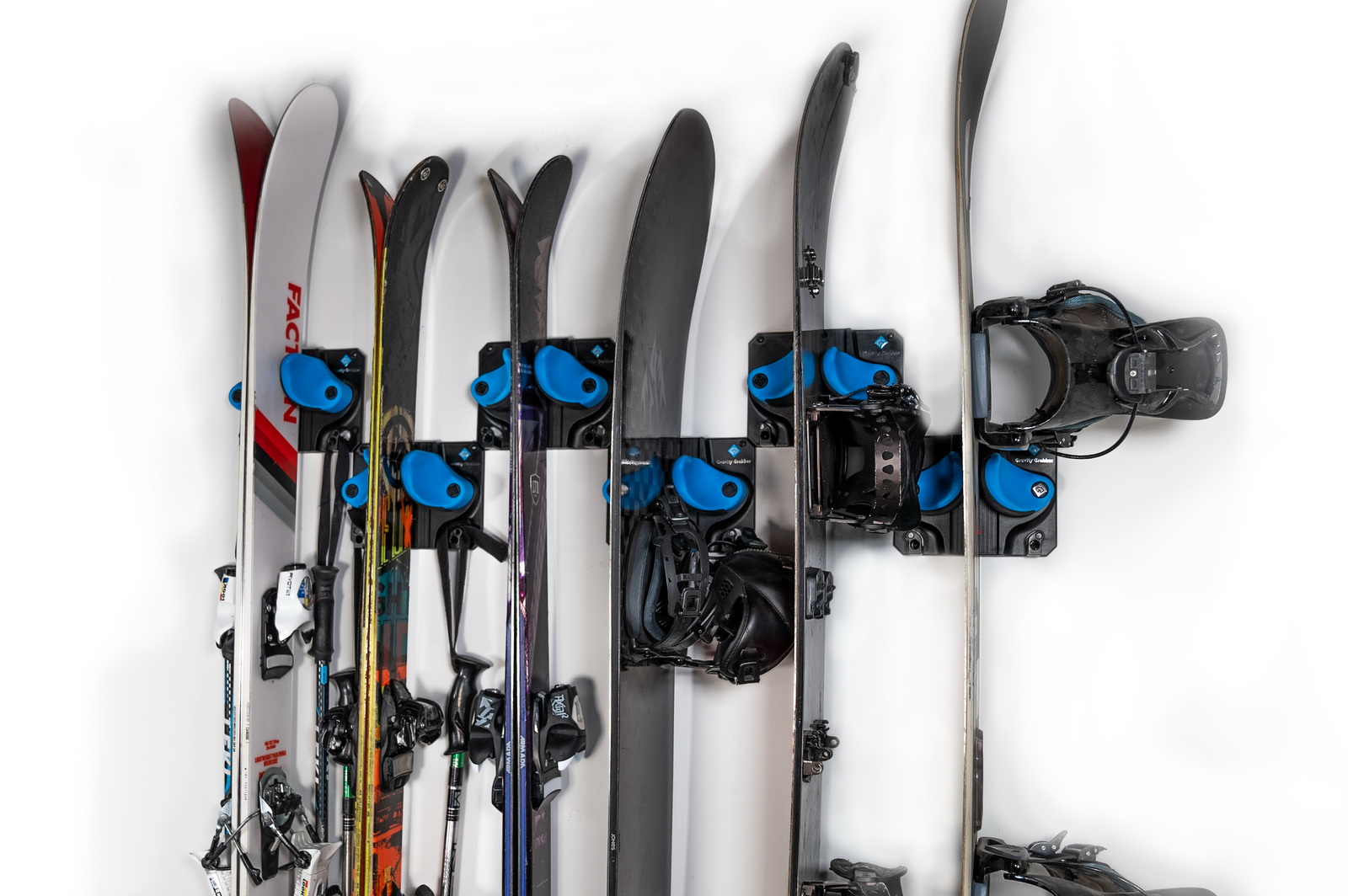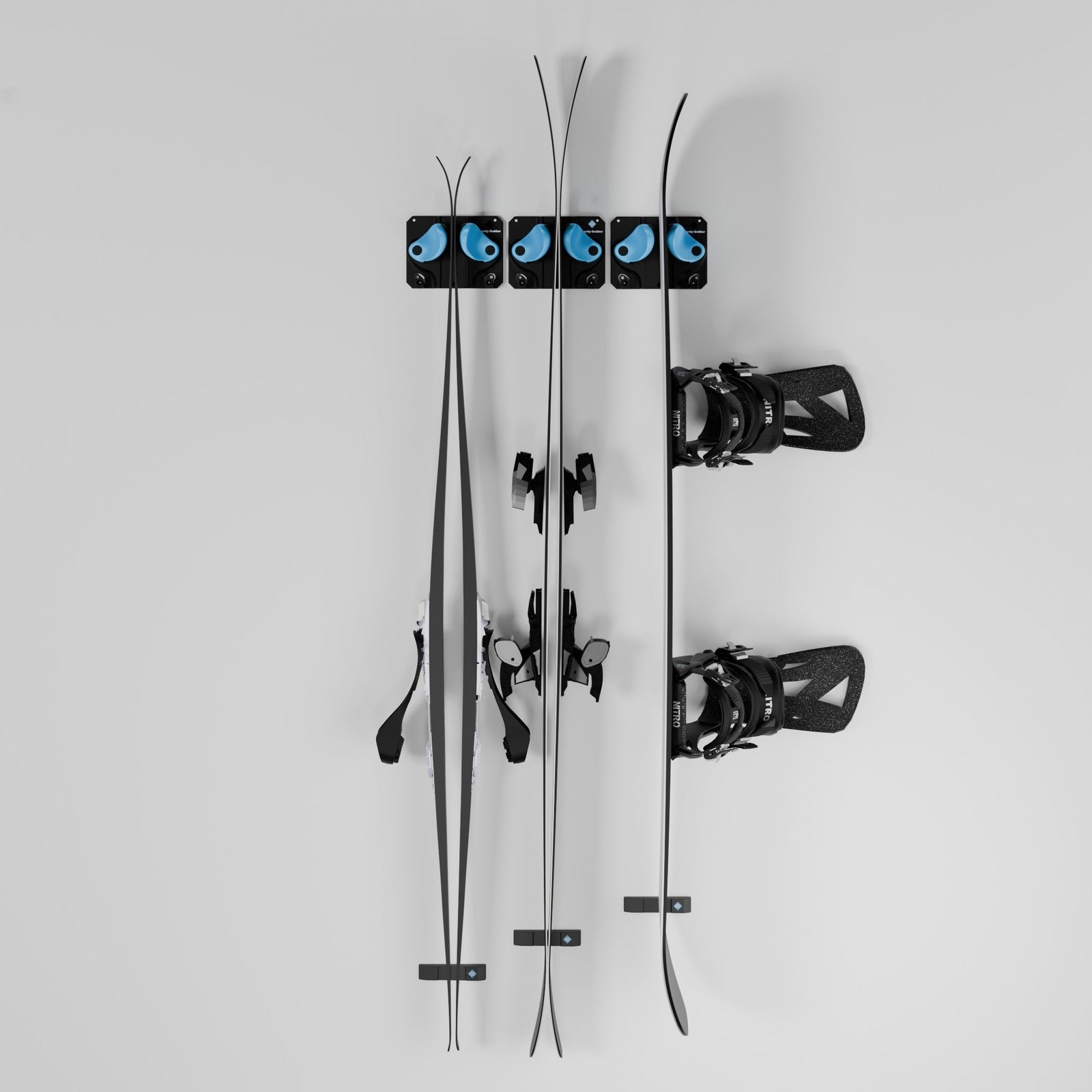Why Ski Racks Matter
If you own skis, you know they’re more than just equipment—they’re an investment. But skis don’t store themselves well. Left leaning in corners, they slip and fall. Left on the ground, they soak up moisture and rust. Pile them with other gear, and they scratch or warp.
That’s why ski racks matter. They don’t just organize your garage or mudroom—they protect your skis so they last longer and perform the way they should.
The Main Types of Ski Racks
Wall-Mounted Ski Racks
These racks mount directly to the wall, keeping skis upright or horizontal. They’re compact, keep skis off the floor, and make great use of vertical space.
-
Best for: Small garages, mudrooms, or households that want quick access.
-
Watchouts: Require drilling into studs for stability.
Freestanding Ski Racks
Self-contained racks that sit on the floor and hold multiple pairs upright.
-
Best for: Rentals, basements, or temporary setups.
-
Watchouts: They take up valuable floor space and can still tip if unevenly loaded.
Ceiling-Mounted Racks
Overhead storage keeps skis out of the way—great for off-season storage.
-
Best for: Long-term storage or when wall/floor space is maxed out.
-
Watchouts: Less convenient for everyday use, especially mid-season.
DIY Ski Racks
Home-built solutions from wood, PVC, or metal pipes.
-
Best for: Budget-conscious skiers or those with unique space needs.
-
Watchouts: Without careful padding and spacing, skis can still be scratched or warped.
What to Look For in a Ski Rack
-
Protection: Padding or soft contact points to avoid scuffs.
-
Elevation: Keep skis off damp floors where rust starts.
-
Ease of Use: If storing skis takes effort, you won’t do it consistently.
-
Space Efficiency: Compact racks that fit your space are key.
-
Scalability: Families and gear collections grow—choose a system you can expand.
Where Gravity Grabber Fits In
Among the different ski racks, the Gravity Grabber is a modern take on the wall-mounted category. Here’s what sets it apart:
-
Protective Grip: Instead of hooks or clamps, padded arms cradle skis gently, avoiding scratches or pressure on edges.
-
Off-the-Ground Storage: Elevates skis above damp floors, helping prevent rust.
-
Quick Access: No fiddling with straps or clamps—just slide skis in or out.
-
Versatility: Works for skis and snowboards in winter, then pivots to hold rakes, paddles, lacrosse sticks, pickleball paddles, or fishing gear in summer.
-
Compact Design: A small footprint that suits both small garages and larger gear rooms.
Compared to traditional racks, Gravity Grabber focuses on protection and adaptability. A basic hook may keep skis upright, but it can also scratch them. A freestanding rack may hold several pairs, but it hogs floor space. Gravity Grabber offers a balance—secure, protective, and multi-use.
Building the Right Setup
Choosing the right rack depends on your home and habits:
-
Families: Line up multiple wall-mounted units for each skier’s gear.
-
Small garages: Go vertical with slim racks like Gravity Grabber to save space.
-
Seasonal skiers: Combine ceiling racks for off-season with a wall-mounted system for in-season.
-
Cabins or rentals: Freestanding racks for guest gear, paired with wall racks for your own.
Conclusion: Ski Racks That Work for You
Ski racks aren’t just about tidiness—they’re about protecting gear and making ski days easier. The right rack depends on your space, your storage habits, and your gear.
From freestanding frames to ceiling storage, there are plenty of options. For skiers looking for a compact, protective, and adaptable solution, the Gravity Grabber is one of the few ski racks designed to work year-round—holding skis in the winter and other gear in the off-season.
Because the best ski days don’t start at the mountain—they start with how you store your skis at home.




